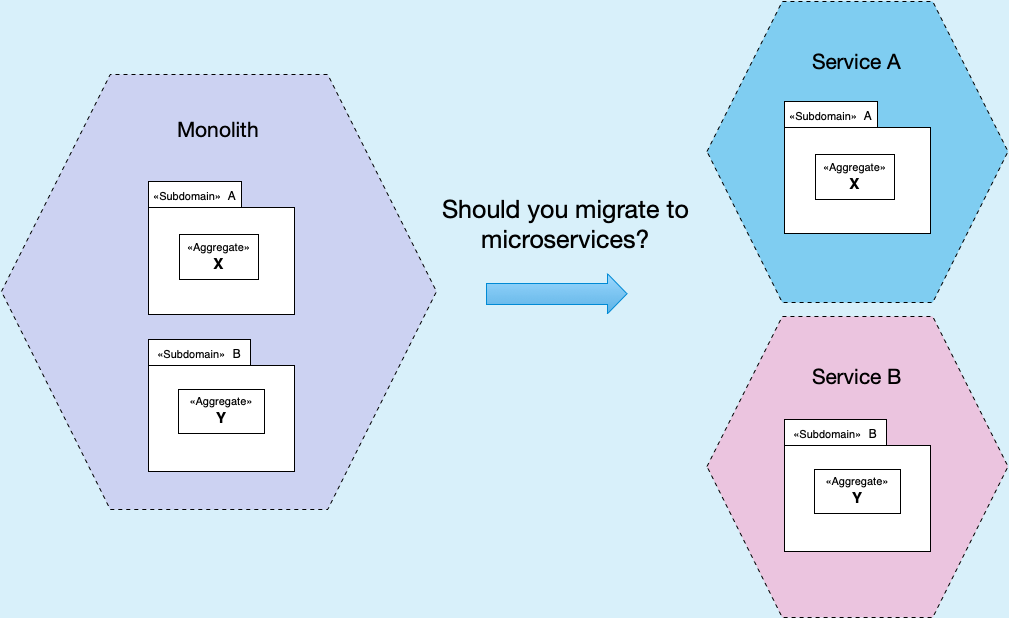Big decisions: Should you migrate your monolith to microservices? Part 1

If you are a technology leader (CxO, VP, etc) responsible for a monolithic, business critical application you are most likely under tremendous pressure to accelerate software delivery. That’s because the business needs you to deliver features more rapidly, frequently, reliably so that it can remain competitive and thrive in today’s increasingly volatile and unpredictable world. You might also have problems the runtime behavior of your application. What’s more, the application’s technology stack might even be obsolete. You are probably wondering whether you can solve your problems by migrating your monolith to microservices.
In this two part series of articles, I describe a decision making framework for determining whether to migrate an application to the microservice architecture. The framework is based on the dark energy and dark matter forces, which are metaphors for the repulsive and attractive forces (also known as concerns) that must be resolved when designing an architecture.
In this article, I’ll show you how to use the dark energy forces to identify reasons to migrate your monolith to microservices. In the next article, I’ll show you how to use the dark matter forces to identify reasons to stay with the monolith.
Let’s dive into the framework starting with a look at whether architectural issues are actually the root cause of your software delivery problems.